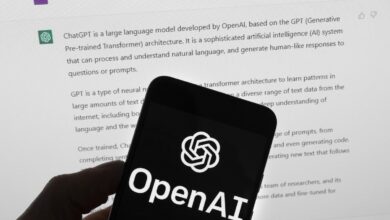AI Briefing: Why WPP is adding Anthropic’s Claude models to its AI platform

WPP’s integration of Anthropic’s Claude 3 model to the holding company’s AI platform is another example of in the evolution of how agencies are thinking about interoperability of various AI models.
Choosing which AI models to use has been a key factor for companies as they develop AI strategies for marketing and other applications. By adding Claude 3 into WPP Open, Anthropic joins other rival models from OpenAI, Google’s and Stability AI. The news, announced last week, also follows an April announcement from WPP and Google Cloud focused on generative AI.
Claude 3, released in March, comes in three versions named Opus, Sonnet and Haiku. Each model — with names associated with their size — also has different capabilities and costs. Opus is the largest, most expensive, most capable, but also the slowest. Sonnet, the middle size, has a blend of both intelligence and speed. Haiku, as one might guess, is the smallest, cheapest and fastest.
In an interview with Digiday last week, WPP CTO Stephan Pretorius said Anthropic’s models provide more transparency and scalability along with more guardrails and flexibility with each model. Using Claude 3 through Amazon’s Bedrock platform, also adds new enterprise-grade AI applications with a higher degree of accuracy, security and scalability.
WPP’s strategy for AI applications falls into three categories built around ideation, automation and optimization. These are used across strategy, consulting, brand design, audience personas, content production, CRM applications and publication relations. According to Pretorius, the approach is an “Claude inside strategy” — a reference to Intel’s iconic “Intel inside” approach.
“They just have an incredible focus on not only safety and fairness in their models and making sure they don’t produce bias in results or kind of unfair content,” Pretorius said. “There’s also this concept around explainability and interpretability: Why did a model produce a result and tell me what data was based on it?”
Training the AI models also includes using various types of data from across WPP. It also incorporates the company’s AI architecture across four different “brains” with information about audiences, performance, brands and channels. Data in those ranges from research and marketing creative to audience data and brand value trackers.
Deciding which LLM to require consideration about everything from the role of authentication and responsibility management to data storage and knowledge graphs. Although marketing companies initially sought ways to integrate a single LLM for various tests, they’re increasingly integrating multiple LLMs into their AI platforms depending on use cases and where data is stored. Through hyperscalers in WPP Open, the goal is to bring more interoperability between cloud providers and LLMs.
“There’s this landscape emerging where there is some sort of alignment, and in some cases very close alignment,” Pretorius said. “But in this case, there’s a significant opportunity to access code via [Amazon] Bedrock.”
The integration comes as Anthropic released new research about Claude 3 to help explain the data sets inside the black box and better connect the dots between datasets and AI model outputs. The goal of Anthropic’s research was to better understand the “mind” of Claude by identifying millions of concepts that are triggered when it reads various texts or sees certain images.
The explainability of AI has been a challenge for years, even for the experts developing the models. That’s made it hard to not only to know how they work but also to find ways of improving them and achieving consistency for various applications.
Solving challenges around AI explainability, accuracy and copyright concerns is also helping some startups create new lines of businesses. Last week, Patronus AI announced a new $17 million fundraising round to develop ways to audit AI models faster, cheaper and at scale — which is especially when checking answers in real-time based on various prompts and outputs.
The funding will further the startup’s R&D strategy, develop new standardized data sets, create new features for auditing AI models and build out its sales and marketing teams, according to Patronus AI CEO and co-founder Anand Kannappan,
In an interview last week, Kannappan told Digiday it’s still a very challenging technical problem to know how to quantify something. Some of Patronus’s current tools help with things like checking for copyright infringements, hallucinations, and accuracy.
“These are capabilities that just don’t exist today at all,” he said. “And that’s just because the way that people are using evaluators, developing large language models, all these kinds of things are still really expensive and still really slow.”
Prompts and Products: Other AI news and announcements
- Publishers are worried AI-generated search results in Google’s “AI Overview” will harm referral traffic and ad revenue.
- Google debuted numerous new AI-powered ad products at its annual Google Marketing Live event, including new ads for its recently released AI Overviews feature for search.
- OpenAI faced scrutiny after actress Scarlett Johannson accused the company of using a synthetic version of her for the voice of ChatGPT without her permission.
- A new deal between News Corp and OpenAI will let OpenAI answer questions using content and mast heads from more than a dozen News Corp properties including The Wall Street Journal, Market Watch, and the New York Post.
- Reddit and OpenAI announced a new partnership to use Reddit content to train Open AI’s language models.
- During Microsoft’s Build developer conference, the company announced more than 50 new products powered by its Copilot platform and other AI technologies.
- Canva announced major updates for its design platform using its generative AI technologies including tool tools for large organizations. Meanwhile, Adobe added new AI feature for its Lightroom platform, which gives users new ways to edit photos with generative AI.
- TikTok debuted new generative AI features for its advertising platform including a new “TikTok Symphony” suite for brands that helps with writing scripts and producing videos.
- Amazon announced plans to integrate an upgraded Alexa, which will be powered by generative AI and available through a subscription later this year.
- The AI startup Suno raised $125 million to develop more technology for AI-generated music.
Other AI-related stories from across Digiday:



